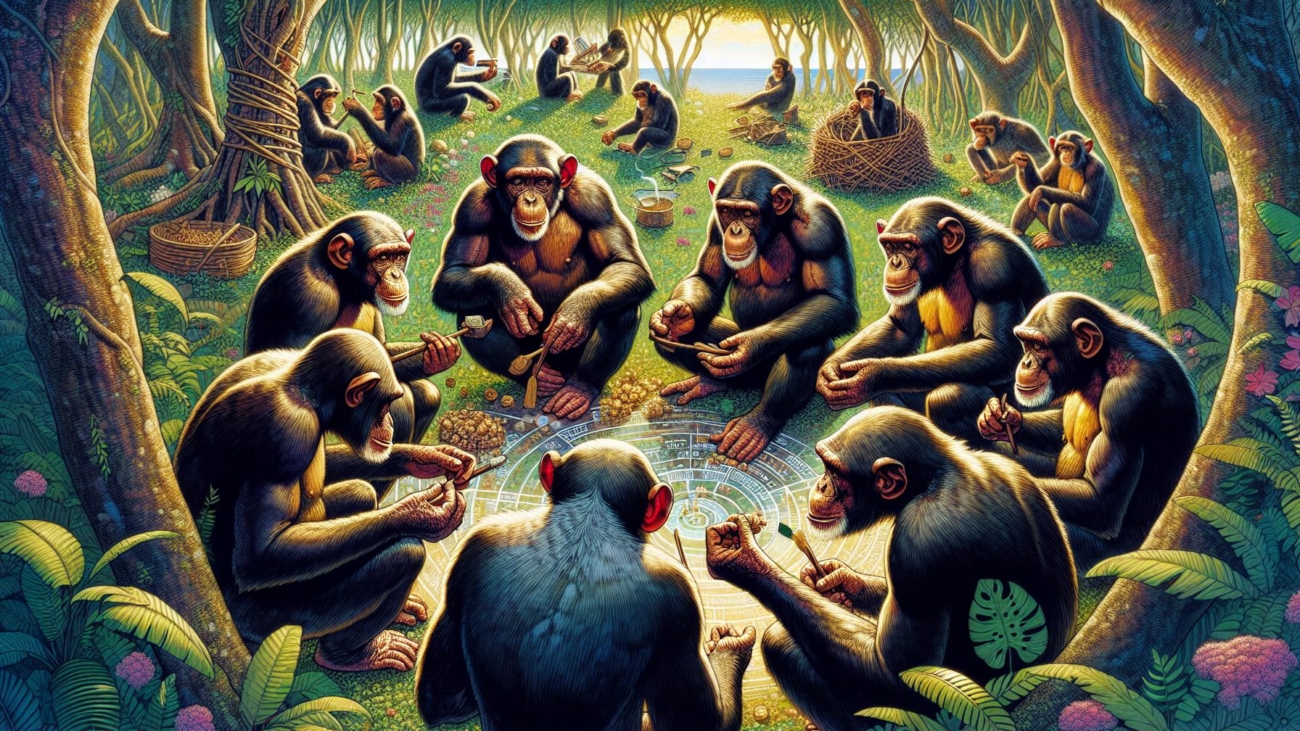Chimpanzees are renowned for their intellect and proficiency in tool use. However, a new multi-disciplinary study led by the University of Zurich raises a fascinating question: do chimpanzee cultures evolve over time like human cultures? The study suggests that some of their most sophisticated behaviors may have been inherited and honed over generations.
Over the years, researchers have established that chimpanzees, much like humans, transmit complex cultural practices, such as tool use, from one generation to the next. However, human culture has significantly evolved from the Stone Age to the Space Age, incorporating new advancements along the way. This progression is not evident in chimpanzee cultures, leading many to believe that humans possess a unique capacity to construct increasingly intricate cultures over time.
In contrast, some researchers studying wild chimpanzees argue that the primates’ most sophisticated tools – those used in sequences to uncover hidden food sources – have likely evolved based on previously accumulated knowledge.
Tracing the Genetic Thread
“Because most tools used by chimpanzees, such as sticks and stems, are perishable, there’s a lack of historical evidence to confirm this hypothesis. This is unlike human inventions like the wheel or computer technology,” explains lead author Cassandra Gunasekaram from the Department of Evolutionary Anthropology at the University of Zurich.
In this innovative study, a diverse team of anthropologists, primatologists, physicists, and geneticists from universities and research institutions across Europe collaborated to trace the genetic connections between chimpanzee populations over millennia. They harnessed recent advancements in genetics to shed light on key aspects of chimpanzee cultural history.
Mapping Early Cumulative Culture
The researchers studied genetic markers indicating similarity between different chimpanzee groups, as well as a variety of foraging behaviors believed to be culturally learned. They classified these behaviors into three categories: those not requiring tools, those needing simple tools (like using a leaf sponge to extract water from a tree), and those dependent on a set of tools.
Passing Down Tools Across Generations
As an illustration of toolset use, Gunasekaram explains how chimpanzees in the Congo region use a robust stick to penetrate hard soil and access an underground termite nest. They then create a ‘fishing’ probe by pulling a long plant stem through their teeth to mold a brush-like tip, which is then inserted into the tunnel. They withdraw the probe and consume any termites that have latched onto it.
The study found a strong link between complex tool-use technologies and distant chimpanzee populations. “This aligns with the expectation that advanced technologies are rarely invented and even less likely to be reinvented, hence more likely to have been shared between groups,” says corresponding author Andrea Migliano, a professor of evolutionary anthropology at UZH.
The Role of Female Migration in Spreading Innovation
In chimpanzee societies, females on the brink of sexual maturity migrate to new communities to prevent inbreeding. This practice facilitates gene flow between neighboring groups, extending over time to distant communities. The study found that these migrating females could also disseminate new cultural advancements to communities devoid of them.
The research also revealed that when both complex and simpler versions of toolsets are found at various study sites, genetic markers suggest past connections between the sites through female migrations. This points to the possibility that complex toolsets evolved by enhancing and modifying their simpler counterparts. “These pivotal findings offer a fresh perspective to illustrate that chimpanzees indeed possess a cumulative culture, albeit in its early stages,” Migliano concludes.
